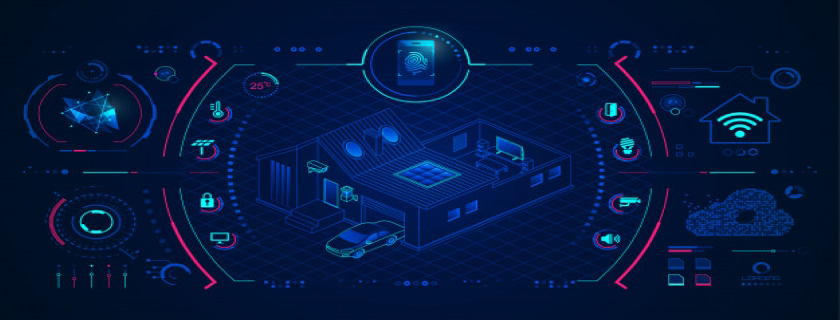Are we reaching closer to George Jetsons futuristic abode?
June 01, 2021

The future is now. And those things which were once considered only in science fiction are now becoming a reality. Take the case of George Jetson's futuristic abode depicted in "The Jetsons, "a candy-colored, cartoon animated television series that premiered in 1962 on ABC (American Broadcasting Corporation). Had anyone imagined that we would see George Jetson's futuristic abode in Bill Gates's smart home one day? Albeit with a huge price tag.
Thanks to rapid stride in IoT (Internet of Things), sensors, radio wave-based IoT protocol, smartphones, 5G, uninterrupted power supply, and battery back up, it is now possible to have a smart home, not only for the tech-savvy wealthy people but also for the huge masses in the developed and developing countries within our lifetime.
How smart home works
The concept of a smart home is evolving rapidly. The smart home is a dwelling in which a communications network (including sensors, cameras, nodes, and gateway) connects the home appliances or electrical devices (such as lighting, home security, home theatre, and thermostat) and enables them to communicate with each other. All IoT devices (Smart appliances) can be controlled, monitored, or accessed by voice, remote control, tablet, or smartphone.
The data collected from IoT devices can be merged into information to trigger actions, making home dwellers' lives safe, efficient, and convenient. It may be possible that all fixed physical elements (walls, floors, and ceilings), movable elements (doors and windows), and appliances (dishwasher, refrigerator, and trash cans) can have their specification and sensors which can create the building block of the smart home.
Without altering the architectural quality of the traditional analogue home, a smart home enhances the convenience and enables the dweller to control everything of the home appliances. By replacing physical switches of light, heating, air conditioning, and audiovisual equipment with body sensors, door magnetic sensors, wireless infrared detectors, or gesture-reading devices, the smart system enhances convenience for the dwellers.
Some of the examples of smart system are as follows:
-
Life-saving smoke sensors can not only create an immediate acoustic or visual alarm but also unlock doors, dial the fire department, and light the path to safety.
-
The gas leak sensor can prevent an imminent explosion.
-
Smart window and door sensors will detect whether the window or door is opened or closed, ensure that windows are closed, and jealousies are drawn before the storm or rain arrives, and inform the security system.
-
Infrared cameras and motion sensors placed in sensitive areas can detect the intrusion of burglars or animals and can trigger the appropriate actions.
The beauty of Z-Wave, ZigBee, and other radio wave-based IoT protocols is that they can put some devices at a reduced level of functionality, thus impart energy efficiency. Furthermore, the usage of smart meters enables dwellers to track and control the appliance's energy usage. The smart system ensures that lights are automatically turned off in empty rooms, and rooms can be heated or cooled based on the occupancy of the dweller, thus saves energy. Integrated Wi-Fi thermostat control, schedule, and monitor your home's temperatures from a smartphone.
WAY AHEAD
Although the journey of the smart home has started in 1975 with the development of electrical interfaceX10, which allows electrical appliances or devices to communicate over the existing electrical wires of a home, the advent of radio wave interface network communication technology (mesh networks) such as ZigBee, Z-Wave, Blue Tooth, and
Wi-Fi has accelerated the growth of home automation products. But before mass adoption of smart home start trickling some teething and perennial problems must be addressed. Along with addressing security concerns, the smart home system must have failure-proof characteristics, flexibility to the system's different interfaces, and interoperability.
The smart home will not make its dweller's life safer and make life easy for senior citizens living alone or people with disabilities who need nursing help for their daily life chores. Unlike the industrial revolution, which was restricted to the developed world, this time, not only many developing countries such as Singapore will catch up with the developed countries but also leapfrog in implementing smart home technology for their citizens.
Thanks to the integration of a smart home with demand response management, the smart home will save energy and empower the human race to fight climate change-related challenges. As a human race, we have not yet reached the smart home, but we are gradually moving in that direction. Rather than solely build on fancy things as depicted in the Jetson series, the new smart home will be built on the real need of security, safety, and convenience.
Categories
Tags
Related Article
No related article found!